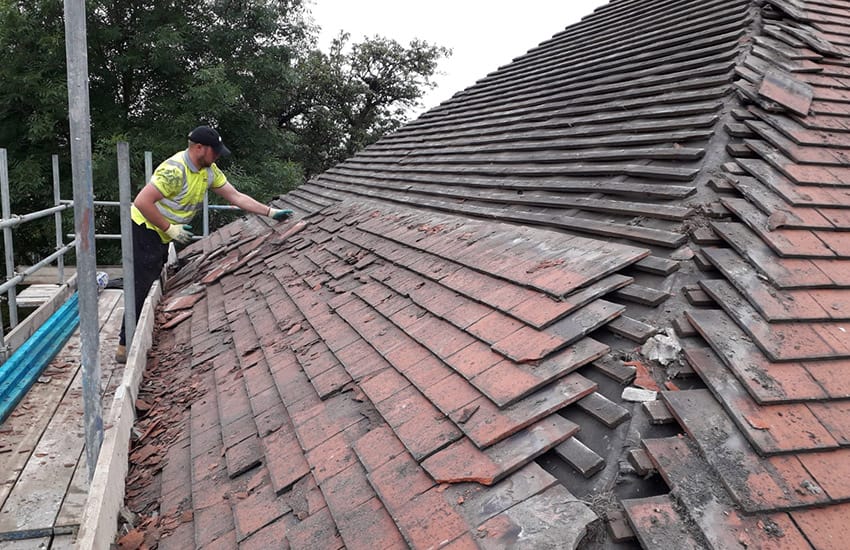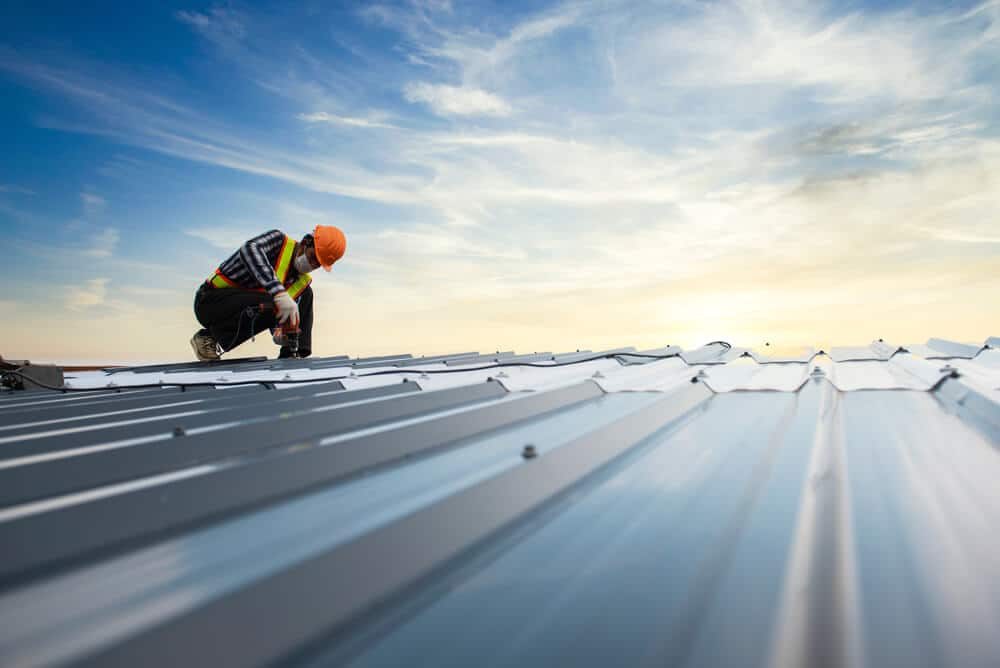Roofing Companies Oahu: Relied On Experts for Your Roofing Demands
Roofing Companies Oahu: Relied On Experts for Your Roofing Demands
Blog Article
Understanding the Different Sorts Of Roof Coverings: A Comprehensive Overview for Homeowners
With a variety of options-- varying from the typical gable to the contemporary flat-- each type presents distinct benefits and obstacles that must align with the homeowner's specific demands and environmental considerations. As we discover the complexities of numerous roofing types, it becomes obvious that one size does not fit all; the ideal choice might shock you.
Saddleback Roof
Saddleback roofs, defined by their triangular form, are among the most popular roof covering styles as a result of their simpleness and efficiency in losing water and snow. This style includes two sloping sides that fulfill at a ridge, allowing for effective drainage and lessening the threat of water accumulation. The high pitch commonly related to gable roofs improves their capacity to deal with heavy rainfall, making them ideal for various environments.
In addition to their functional advantages, saddleback roofs provide visual adaptability. They can be adjusted to various architectural styles, from conventional to modern-day homes. The layout can also suit additional features such as dormer home windows, which enhance natural light and ventilation in the attic space.
Additionally, gable roofs offer adequate area for insulation, adding to power effectiveness. House owners can pick from a variety of roofing materials, consisting of asphalt tiles, steel, and ceramic tiles, additionally boosting customization options.
Despite their advantages, saddleback roofs may call for additional assistance in locations susceptible to high winds or heavy snowfall. On the whole, the gable roof remains a popular selection because of its blend of performance, longevity, and aesthetic charm.
Flat Roofs
Flat roofing systems are typically acknowledged for their minimalist layout and sensible applications, specifically in industrial and commercial setups (oahu roofing). These roofs include a straight or almost horizontal surface area, which enables very easy building and construction and versatile space application. While they might lack the visual appeal of pitched roofing systems, level roofings offer countless benefits, specifically in metropolitan environments where optimizing space is critical
One of the key benefits of level roofing systems is their accessibility. Property owners can utilize the roofing space for numerous purposes, such as roof gardens, terraces, or solar panel installments. Furthermore, level roof coverings are usually a lot more cost-effective to keep and set up compared to their sloped counterparts, as they call for fewer products and labor.
Usual materials utilized for flat roofing systems include built-up roofing (BUR), changed bitumen, and single-ply membrane layers, each offering distinctive advantages. On the whole, level roofing systems offer as a adaptable and functional option for numerous house owners and services alike.
Hip Roofings
Hip roofing systems are characterized by their sloped sides that assemble at the top, forming a ridge. This design stands out from gable roofing systems, as all 4 sides of a hip roofing system slope downwards towards the wall surfaces, supplying an extra secure framework. The angle of the slopes can differ, enabling flexibility in architectural visual appeals and functionality.
One of the key advantages of hip roofs is their capability to stand up to heavy winds and damaging climate condition. The sloped surface areas enable better water drainage, reducing the danger of leakages and water damages. Additionally, hip roofs provide boosted attic area, which can be utilized for storage or perhaps exchanged habitable areas.
Nonetheless, constructing a hip roofing can be more complicated and expensive than easier roof kinds, such as gable roofs. The extra product and labor associated with creating the slopes and making certain proper structural integrity can bring about greater costs. Regardless of these drawbacks, several homeowners favor hip roofs for their resilience, aesthetic allure, and possibility for energy effectiveness.
Mansard Roofing Systems
Mansard roofs, typically identified by their one-of-a-kind four-sided layout, feature two inclines on each side, with the reduced incline being steeper than the top. This building style, stemming from France in the 17th century, is not just aesthetically enticing however practical, as it makes best use of the usable area in the top floors of a structure. The steep reduced slope allows for more headroom, making it an excellent redirected here selection for attic rooms or lofts, which can be converted right into living areas.
Mansard roofing systems are characterized by their adaptability, accommodating different building styles, from traditional to contemporary. They can be created with various products, consisting of asphalt roof shingles, slate, or steel, supplying house owners with a series of options to match their budget plans and choices. Additionally, the style permits the combination of dormer windows, enhancing natural light and air flow in the top degrees.
Nevertheless, it is necessary to think about the possible disadvantages. Mansard roof coverings might need more upkeep because of the complexity of their design, and their high slopes can be challenging for snow and rainfall runoff. Overall, mansard roof coverings incorporate sophistication with practicality, making them a preferred selection amongst property owners looking for distinct architectural functions.
Dropped Roofs
As home owners try this significantly seek simplicity and functionality in their building styles, lost roofings have arised as a preferred selection. Defined by a single sloping aircraft, a shed roofing offers a minimalist visual that matches numerous home styles, from contemporary to rustic.
Among the primary benefits of a shed roofing system is its uncomplicated building, which usually translates to reduce labor and product costs. This style enables efficient water drainage, minimizing the threat of leaks and water damages. In addition, the vertical slope offers enough area for skylights, improving all-natural light within the inside.
Lost roofs likewise offer flexibility in terms of usage. They can be successfully incorporated into additions, garages, or outside structures like structures and sheds. In addition, this roof style can fit different roof products, consisting of steel, asphalt tiles, or perhaps environment-friendly roofs, aligning with environmentally friendly initiatives.
Nevertheless, it is vital to take into consideration local environment problems, as hefty snow loads might demand changes to the roofing system's angle or framework. On the whole, dropped roofings present a practical and aesthetically pleasing option for home owners aiming to take full advantage of performance without endangering style.
Conclusion


Gable roofings, identified by their triangular shape, are among the most prominent roof covering styles due to their simplicity and performance in losing water and snow. oahu roofing. The steep pitch typically associated with gable roofings boosts their ability to deal with heavy rainfall, making them ideal for various climates
While they may do not have the visual allure of pitched roofings, level roofs provide various benefits, particularly in city settings where maximizing area is critical.

Report this page